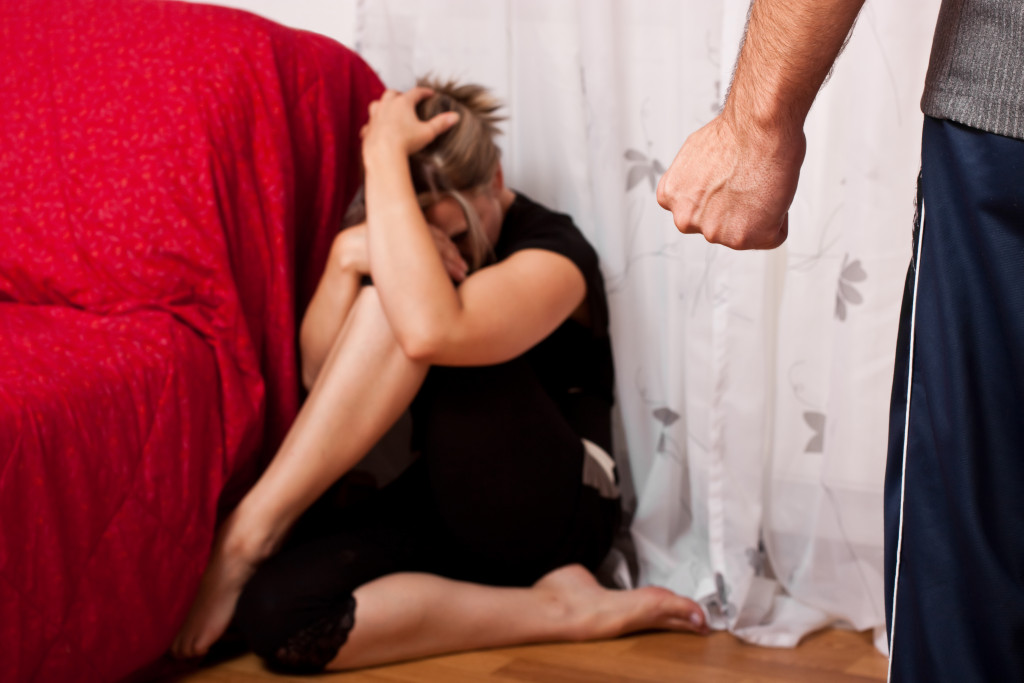Domestic violence is the most common form of family violence in our society. It is not a one-time occurrence but a pattern of behavior to establish power and control over another person through physical, sexual, or emotional abuse.
Victims find themselves trapped as the abuser gradually isolates them from friends, family, and other sources of support. The victim may even come to blame themselves for their partner’s abusive behavior, believing that they somehow deserve it.
Domestic violence can take many forms, but it always involves one person trying to control another through intimidation, threats, or physical violence. If you’re in a dangerous situation, here are eight steps you can take right now to protect yourself and get help:
1. Talk to Someone Who Can Help
It can be difficult to know where to turn for help when you’re in an abusive relationship. You may feel ashamed, embarrassed, or scared of what people will think if they find out. But remember, you’re not alone. There are many people who want to help you, and there are ways to get help without anyone knowing.
The first step is to talk to someone who can help. This could be a friend, family member, counselor, therapist, or any other support person. Talk to someone who will listen and believe you and who won’t judge or criticize you. They can help you come up with a plan to get safe and start healing.
2. Create A Safety Plan
Once you’ve talked to someone about your situation, it’s time to create a safety plan. This is a personalized plan that will help you stay safe when you’re faced with an abusive situation. Your safety plan should include:
- A list of safe people to turn to for support
- A list of safe places to go in case of an emergency
- An escape plan if you need to leave quickly
- Instructions on how to pack and what to take with you if you have to leave quickly
- Instructions on how to keep yourself safe online and offline
3. Get Connected To Local Resources
There are many local resources available for victims of domestic violence. These resources can provide you with support, counseling, advice, and more. You can find a list of local resources on the internet or by contacting your local domestic violence shelter.
4. Reach Out For Help

If you’re not sure where to start or need someone to talk to outside of your personal support system, there are many national helplines available that can help. The National Domestic Violence Hotline provides crisis counseling and 24/7 support for victims of domestic violence. You can reach them by calling 1-800-799-SAFE (7233) or visiting their website.
5. Leave Your Abuser
Leaving an abusive relationship is not easy, but it is often the best and safest option for victims of domestic violence. If possible, plan ahead before you leave. This includes having a safe place to go, packing a bag in advance, and saving money.
Also, contact a divorce lawyer and file for a restraining order. If you have children, make sure to get custody of them before you leave. You can also contact your local domestic violence shelter for more information on how to safely leave your abuser.
6. Take Care Of Yourself
When you’re in an abusive relationship, it’s important to take care of yourself both physically and emotionally. This means eating healthy, getting plenty of sleep and exercise, and avoiding drugs and alcohol. It also means recognizing the signs of stress and taking steps to manage your stress levels.
7. Seek Counseling
If you’re a victim of domestic violence, counseling can be an important part of your recovery. Counseling can help you deal with the trauma of abuse and any other mental health issues you may be dealing with. It’s important to find a counselor with who you feel comfortable and who has experience working with victims of domestic violence.
8. Build A Support System
One of the most important things you can do after leaving an abusive relationship is to build a support system of friends and family members who will be there for you. These people can provide you with emotional support, practical help, and a shoulder to cry on when needed.
It’s never easy to deal with the trauma of abuse, but there are many resources available for those who need help. If you think that you might be a victim of domestic violence and want to know how to get help, then we recommend following these eight steps right now. These guidelines will provide you with information on how to find local support systems as well as national helplines in case your abuser finds out where you live or if they track your phone usage. We hope this article has been helpful!

